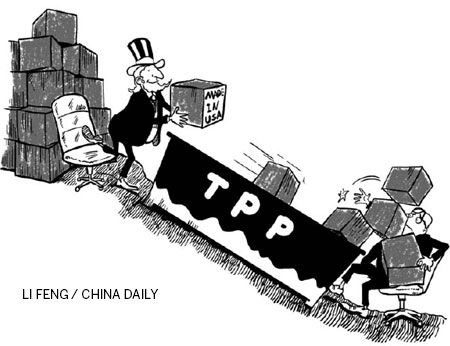TPP may drive BRICS into action

The 14th round of negotiations on Trans-Pacific Partnership begins at Leesburg, Virginia, in the United States from Sept 6. The TPP is a significantly expanded version of the Trans-Pacific Strategic Economic Partnership Agreement and Washington is keen on wrapping it up before the presidential election in November for obvious reasons.
The nine countries that will negotiate the TPP are Australia, Brunei, Chile, Malaysia, New Zealand, Peru, Singapore, Vietnam and the US. Once finalized, the TPP will be the largest trade block in the Asia-Pacific region, and could become even larger once Canada and Mexico join the discussions. Japan and the Republic of Korea could follow suit.
The TPP is an ambitious trade agreement covering several issues. It includes trade in goods, tariffs and services, cross-border investment, rules on intellectual property rights (IPR), environmental and labor standards, and technical barriers to trade. The agreement is also trying to make regulatory systems in member countries as compatible with each other as possible. And the negotiations will include government procurement, trade and investment in innovative products and services, particularly digital technologies.









